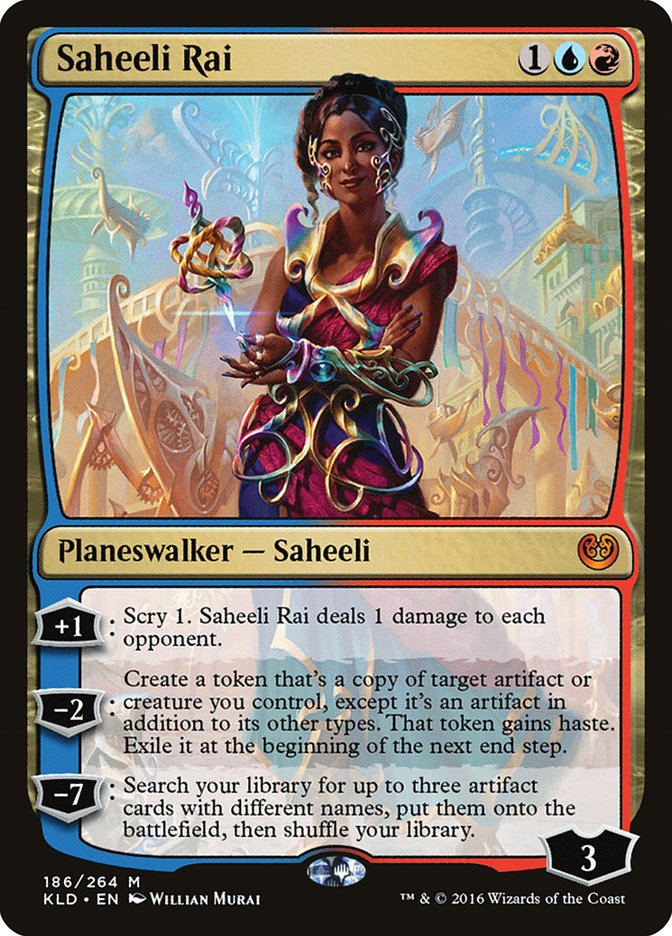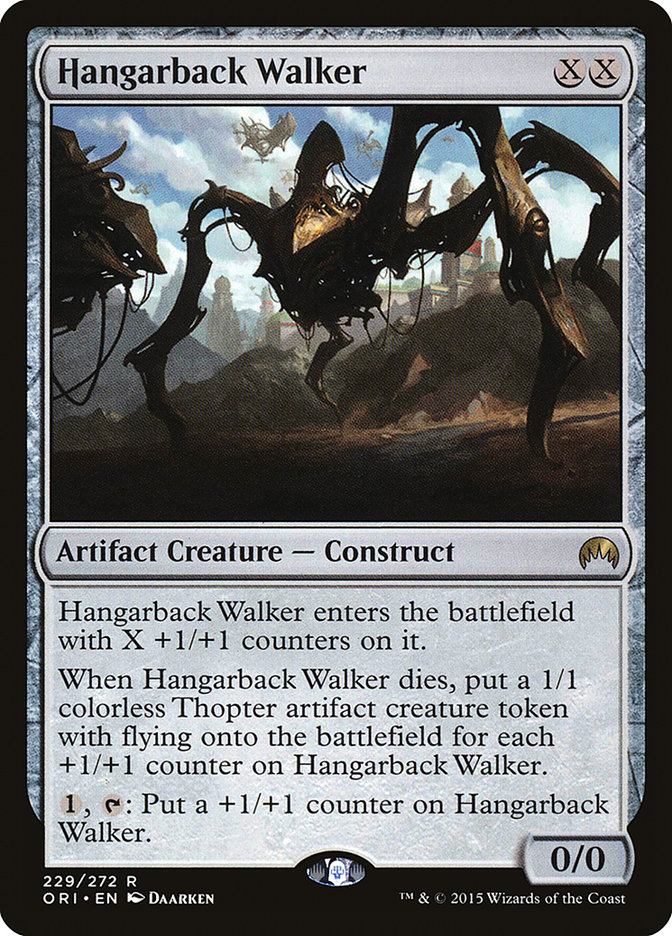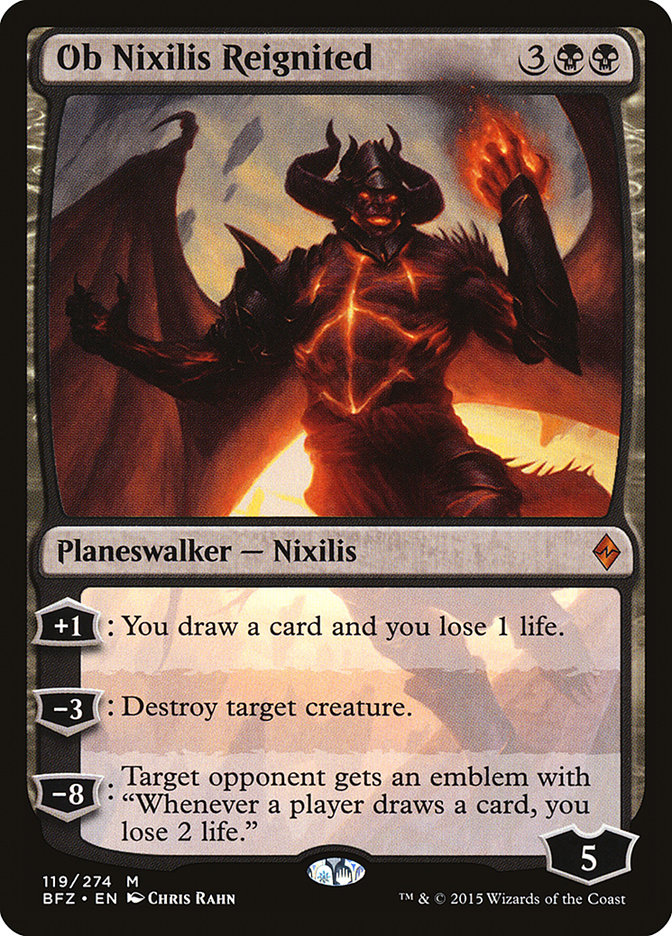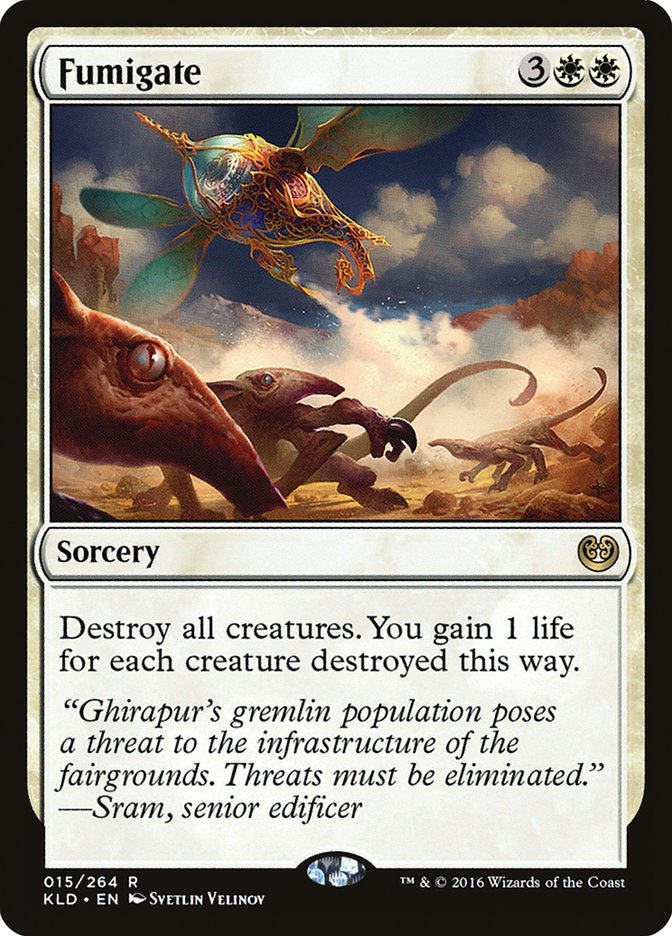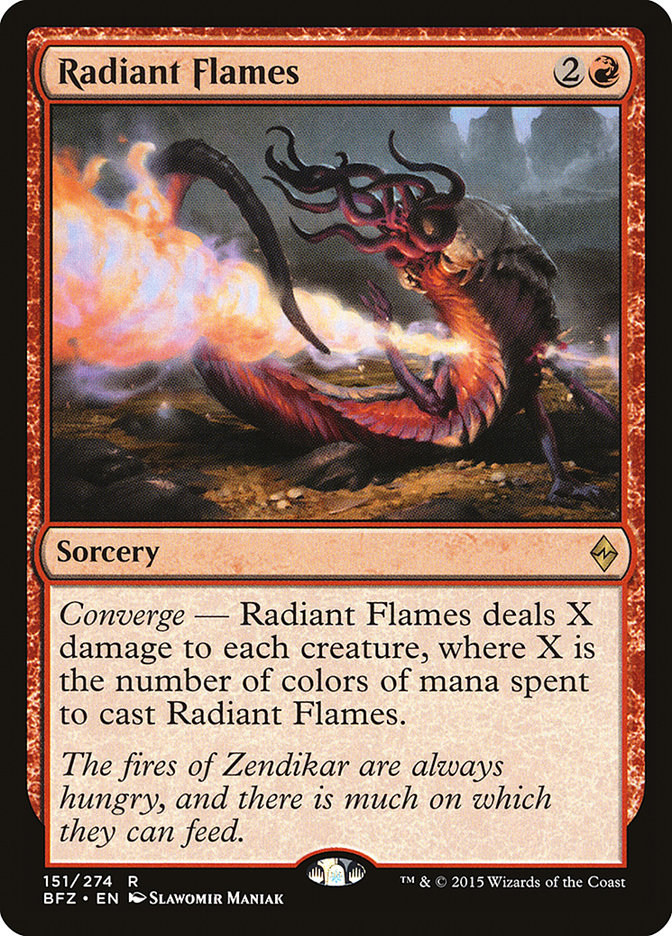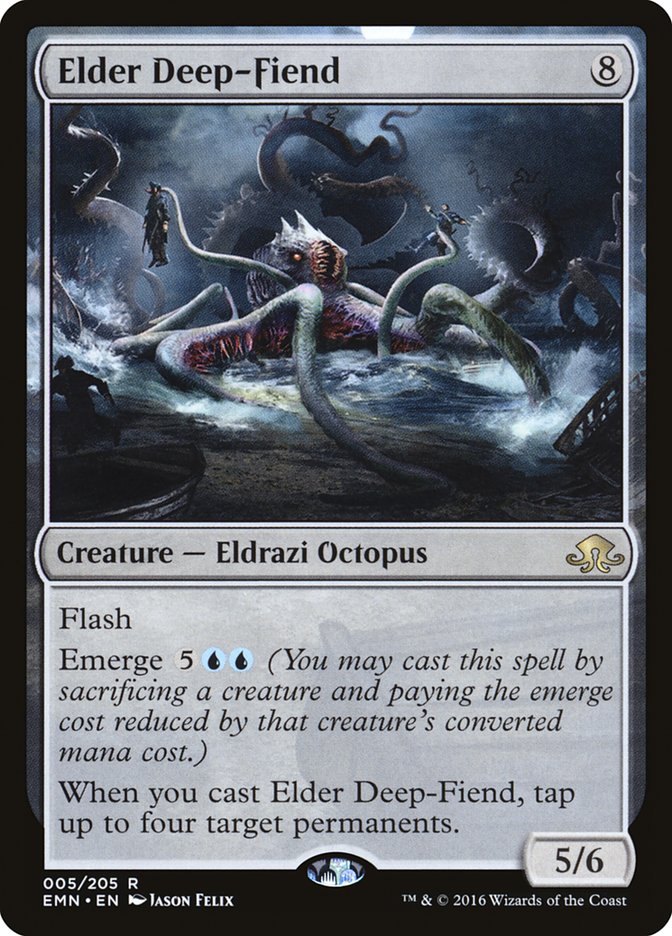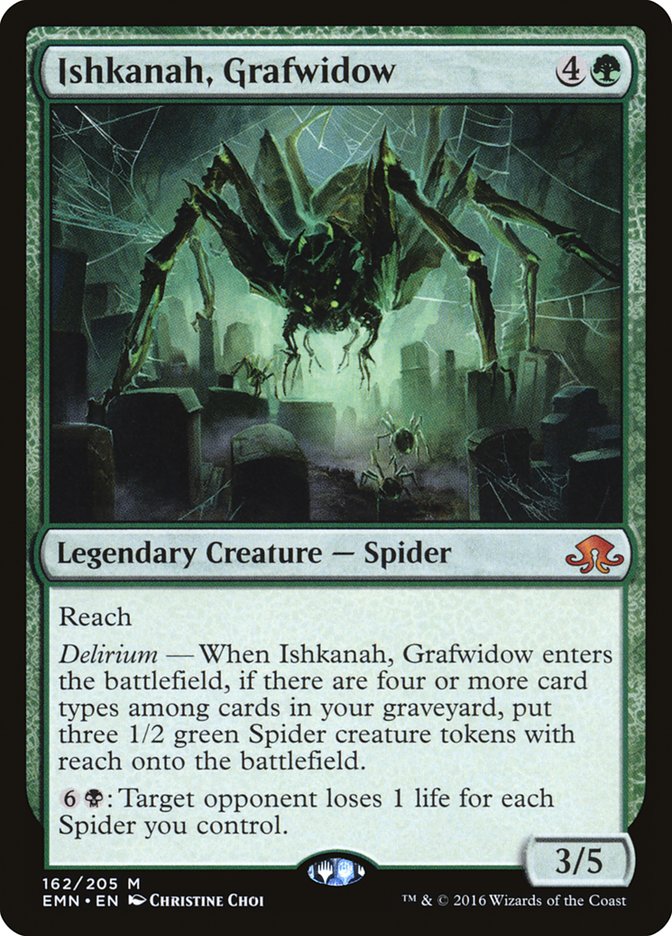SCG Columbus is in the books.
Brennan DeCandio has set the Standard.
Creatures (25)
- 4 Mindwrack Demon
- 2 Tireless Tracker
- 4 Grim Flayer
- 4 Verdurous Gearhulk
- 4 Winding Constrictor
- 3 Rishkar, Peema Renegade
- 4 Walking Ballista
Lands (23)
Spells (12)

With Emrakul, the Promised End out of the picture, Delirium decks have evolved considerably, incorporating many new Aether Revolt cards to give the strategy a more aggressive slant. Noose Constrictor into Rishkar, Preema Renegade is an incredible curve, and even Mindwrack Demon somehow feels like a freshly revealed card since the banning of Reflector Mage.
There a lot of things to accredit to Brennan and largely the entirety of the Top 4’s success with proactive G/X strategies, but I’d like to think that much of the heavy lifting can be attributed to a particularly innocuous artifact.
Walking Ballista is going to set the pace for Pro Tour Aether Revolt and may ultimately prove to be the best card in the set.
Are You Crazy?
Well, I’d certainly like to think not, but maybe Brad Nelson would disagree. A consistent theme of the past few weeks of my testing has involved incorporating Walking Ballista for a few different reasons: a cheap artifact to fuel Improvise or delirium, or perhaps as simply a proactive way to get on the battlefield in my aggressive deck to prevent Saheeli Rai and Felidar Guardian from easily killing me.
Walking Ballista accomplishes all of those things and much more. It simply helps to invalidate many strategies and cards while having a maximum amount of flexibility and ability to scale.
If anything, I would suggest that the presence of Walking Ballista in many of the decks that rose to the top of the Open was the sole reason that Saheeli decks were incapable of taking the title. Folks have often claimed that this level of resistance “doesn’t matter” or that one can simply Shock away the 1/1 artifact and go about killing their opponent.
Frankly, it just doesn’t always work that way. Walking Ballista giving you the flexibility to build your battlefield position for an extra turn or two without concern for being killed instantly is sometimes all it takes to put your opponent under insurmountable pressure while simultaneously allowing the Ballista wielder to actually start leaving up a response to Felidar Guardian. Once they’ve established control of the battlefield in this manner, what are Saheeli players to do?
This doesn’t even attribute for the fact that, many times on turn 5 or 6, these Ballista decks can deploy the artifact for “one” and leave up another piece of interaction. That’s a huge stranglehold that’s being placed on the game when it’s so difficult for Saheeli to fight fairly through 4/5 fliers, planeswalkers, or Tireless Trackers.
Now, I wouldn’t be surprised if our impression of Saheeli combo from last weekend simply needed to evolve more to fight the ubiquitous artifact. For example, the Four-Color Saheeli decks in the Top 8 had a powerful gameplan built on flexibility. The problem is that perhaps both their “A” and “B” gameplans just aren’t able to compete with a streamlined Delirium or aggressive deck built to utilize the Ballista. Their creatures aren’t large enough to compete naturally with G/B Aggro and they don’t have enough raw card advantage and interactive elements that aren’t based around creatures to fight through the proactive nature of Ballista plus removal.
Initial Comparisons
To some degree, I wrote off Walking Ballista initially too as a weaker interpretation of Hangarback Walker, but the cards are just completely different.
Barring the absurdity of Evolutionary Leap or some other dramatic outside influence, Hangarback Walker was largely a very powerful roadblock with a great rate that insulated its controller from sweepers. It was a dream threat in a midrange deck due to how difficult it was to properly remove while also sporting double duty as a blocker against aggressive decks.
At the time, other than the aforementioned enchantment and Dromoka’s Command, there wasn’t a ton of outside synergy with the Thopter maker; it basically just existed in a vacuum as a powerful card.
Walking Ballista on the other hand is a far more proactive threat. It can always make an immediate impact on the battlefield the second it arrives, versus having to get in some kind of tussle or combining with another card as Hangarback Walker did. Further, every counter that is placed on the Ballista essentially reads as an extra two damage over the life of the card while it also progressively makes it more difficult for anyone to get in combat against you and make it out alive.
All of your opponent’s attacks and blocks become worse, as combat that would normally resolve in creatures bouncing off of each other or chump blocks now results in clean trades with +1 +1 counters. If your opponent’s life total ever starts to slip, Walking Ballista can simply “burn” them out, particularly when helped by something as dramatic as Verdurous Gearhulk.
Walking Ballista is a natural predator of planeswalkers. The process is fairly slow without outside assistance, admittedly, but another beauty of Ballista is its ability to scale throughout the game. In late-game situations, Ballista will almost always dominate any planeswalker that threatens to get on the battlefield. Even specific powerful planeswalkers like Ob Nixilis Reignited; Chandra, Torch of Defiance; or Sorin, Grim Nemesis can only hope to trade with the artifact in the majority of situations, as their minus abilities are met with a hail of redirected arrows.
Even more dramatically, the Ballista also invalidates many small creatures. This is similar to the effect of Liliana, the Last Hope – except that everyone can play the Ballista. I don’t particularly have a desire to register cards like Toolcraft Exemplar, Metallic Mimic, Veteran Motorist, or Selfless Spirit right now.
As an aside – the banning of Smuggler’s Copter, the look of the new G/B aggressive decks, and the weakness of Selfless Spirit in the face of Walking Ballista would lead me to believe that some old-fashioned sweepers will prove to be powerful moving forward, Fumigate especially, since many of the green creatures are just too large to be contained by Radiant Flames or even Kozilek’s Return.
While this aspect of a format shift is very attractive to me, there are less desirable implications. Everyone has access to a card that is generically powerful against low-to-the-ground and “go wide” aggressive strategies. It’s true that there are ways to build your deck to be better suited against the Ballista and it’s more than possible to brute-force through the artifact on raw efficient rates, but the fact that the Ballista can be worth upwards of six life and a trade from two mana all the way to locking up the game once it has made a full “Triskelion impersonation” is a tad concerning to me.
Synergy
All of this, and we’ve barely even scratched the surface of the massive synergistic qualities of Walking Ballista. Its ability to scale with +1/+1 counters is obvious, of course, as Brennan showed off to great effect, but we’re in an artifact block!
Walking Ballista can serve as your vessel for Improvise, function as two card types for delirium, scale up to triggering Sanctum of Ugin, close the door on games by being recurred by many cards (including Liliana, the Last Hope), and enable Revolt at will.
About the only major mechanic that it doesn’t work well with right now is emerge.
Walking Ballista gives everyone percentage points against both aggressive and combo decks while adding some direct value to whatever strategy you’re employing with absolute minimal effort.
Yes, of course there will be scenarios where drawing multiples or getting choked early in the game can lead to situations where Walking Ballista is stuck on a single counter for most of the game without making much of a relevant impact. That is the floor, where it still functions as a roadblock against Saheeli Combo. I’m not trying to herald it as some unbeatable threat.
However, the ceiling and the dominance it can display in so many scenarios is much higher, including functioning as a split card: a two-drop/threat that ends the game on the spot in a late topdeck war.
Looking Towards the Pro Tour
Now that I’ve established my argument for Walking Ballista’s presence at the Pro Tour, what do I expect the implications to be? As much as I try to share freely with my audience, I am at the point where decklists and direct ideas are off-limits. That said, to me, this is where all the evidence points.
A few weeks ago I was heavily concerned about the potential dominance of a “Splinter Twin” combo in Standard. Now that dismay has largely been alleviated, but I still believe there to be room to innovate more with the combo. Perhaps Torrential Gearhulk has a larger spotlight within the decklist, or the combo itself is entirely a sideboard strategy.
However, for whatever it’s worth in terms of health of the format, I don’t think that Saheeli hybrid strategies are going to be competitive against G/B Aggro and similar decks moving forward into a more refined format.
I don’t believe that “Human” or even traditional Vehicle strategies will be particularly good. The latter has already taken a massive hit in power with the loss of Smuggler’s Copter, and many of their creatures are vulnerable to Walking Ballista.
We’re probably back to the majority of games of Standard being midrange fights, but I don’t suspect nearly the degree of “turtling” as before. Instead of sitting behind Ishkanah, Grafwidow or cracking a million Clues, most everyone is going to try to get their opponents dead with mythic rares. As I noted previously, this probably does imply that more traditional control decks will be viable as stock in cards like Fumigate, Yahenni’s Expertise, or Descend upon the Sinful rises.
These are all legitimate responses if folks are more interested in the Verdurous Gearhulk side of things rather than Nissa, Voice of Zendikar and Gideon, Ally of Zendikar.
That said, the more flexible players are willing to be or the more they build their decks in a manner reminiscent of a few years ago – control decks still face some very real problems. Despite the raw power of Torrential Gearhulk, they still have difficulty closing many of the games out and can often suffer from stumbling or their removal lining up poorly, especially against planeswalkers or card advantage engines like Tireless Tracker.
In summation, I think we are going to be treated to a very strange version of rock-paper-scissors. The aggressive decks will be like Brennan’s deck – slower than the average, but brutally punishing with massive creatures that are difficult to stop. Control decks may be able to capitalize on these configurations but become vulnerable to more medium-built decks that might even find ways to incorporate Saheeli Rai in a creative manner.
At the center of it all, though, will be many copies of Walking Ballista. Even if we don’t see it in the full force that I am describing, its presence in the format will be strongly felt. Decks will be built both with and against it heavily in mind.



